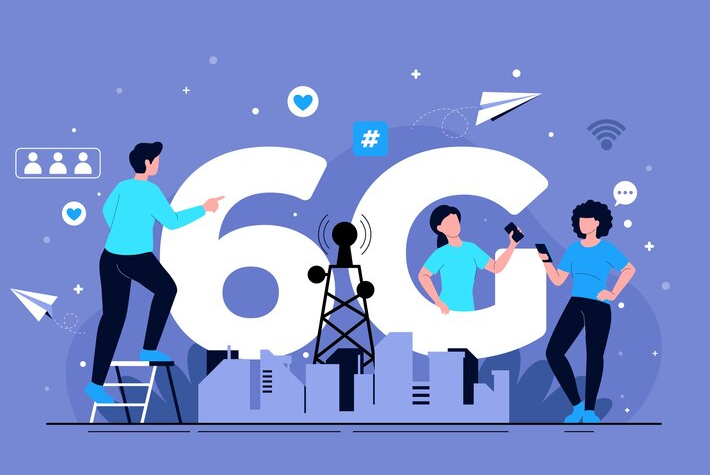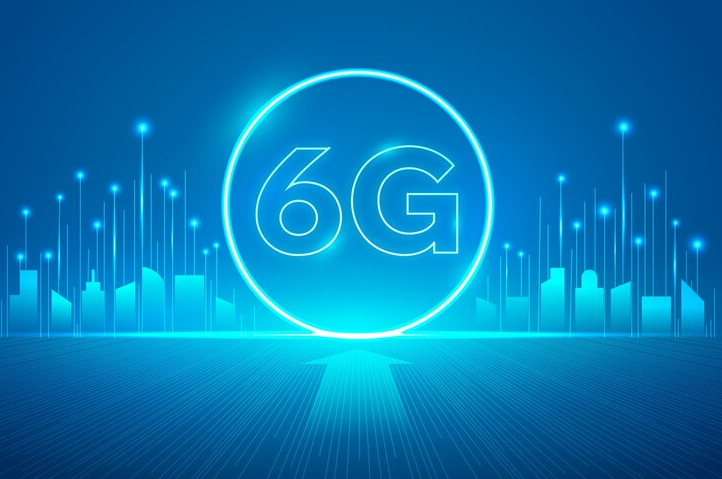The world of wireless connectivity is evolving at an astonishing pace. While 5G networks are still being deployed across the globe, the concept of 6G is already on the horizon. Some might question the need for 6G when the majority of the world is still transitioning to 5G, and regions with 4G and 3G networks are not uncommon. However, the relentless march of technology propels us forward, and standards take time to mature. The emergence of 6G is a testament to the rapid progress in this field, and it signifies the natural progression towards even faster and more robust wireless connectivity.
The Road to 6G: A Continuum of Progress
6G serves as the logical successor to 5G, but it’s conceivable that in the future, the world may abandon numerical nomenclature in favor of simply saying “we’re connected.” With each generational leap in wireless technology, we inch closer to a future where data is available instantaneously, rendering progress bars and wait times obsolete.
When to Expect 6G: A Glimpse into the Future
Traditionally, a new mobile network standard emerges roughly once a decade. Therefore, it’s reasonable to anticipate 6G networks to make their debut around 2030. Some regions, particularly those at the forefront of 5G adoption, may experience early trials and witness the unveiling of 6G-capable devices. However, the transition won’t be instantaneous; it will involve debates over frequency bands, spectrum licenses, infrastructure deployment, and regulatory considerations.

Even in 2022, 5G adoption in North America was at just 39%, with a projected 91% by 2030. This means that as 6G makes its debut, 5G and possibly 4G networks will continue to coexist.
Read Also: How to Play Music on Twitch
The 6G Frontier: Early Exploration
Although 6G is less than a decade away, only a handful of companies are actively researching it. However, as 5G’s limitations and weaknesses become apparent, intensive experimentation with 6G is expected to accelerate. The next-generation network will address these shortcomings, and decisions on its development will soon follow.
Unleashing the Potential of 6G:
A Quantum Leap in Connectivity
6G promises to magnify the benefits of 5G in every way imaginable. Everything you currently use a network connection for will see substantial enhancements on a 6G network. From more powerful VR and AR systems to interconnected smart cities, AI integration, and autonomous vehicles with vehicle-to-vehicle (V2V) communication, 6G will deliver these experiences with even greater efficiency. Additionally, it’s likely to open doors to innovations we haven’t yet considered. Think immersive experiences and lifelike holographic video calls.
6G: Where the Physical Meets the Virtual
Renowned experts suggest that 6G will provide a “sixth sense experience” where biology and AI converge. It will create a world where “cyberspace supports human thought and action in real time through wearable devices and micro-devices mounted on the human body.” Healthcare, too, will undergo transformative changes. Imagine a future where you can seamlessly control exoskeletons and health devices with your thoughts, making daily life more manageable and enjoyable.
Zero Latency: The Ultimate Game Changer
While 5G brought impressive low latency of around 4 ms, 6G networks may approach virtually zero latency. This will redefine how we consume media and engage in real-time experiences. The start time for movies, TV shows, and games will be limited only by the time it takes for your screen to power on. Crystal-clear video calls will mimic in-person interactions, and an array of new products and services will emerge to harness 6G’s bandwidth and capabilities to their fullest extent.
6G vs. 5G: The Quantum Leap
The most apparent distinction between 6G and 5G will be in speed and latency. Just as 5G left 4G in the dust, 6G is set to be magnitudes faster. While early speed estimates are speculative, we can anticipate an extraordinary leap in data transfer rates. Some suggest that 6G might reach terabyte-per-second speeds. While specifics are uncertain, it’s expected that 6G will utilize ultrahigh frequencies, possibly reaching into the terahertz range.
The Connectivity Challenge: Expanding the Reach of 6G
The limited coverage of millimeter waves has been a challenge in 5G deployment. Similarly, the inherently short range of terahertz radiation presents a coverage dilemma for 6G. The range of terahertz waves is roughly 10 meters, far too short for extensive 6G network coverage. However, research into signal amplification and novel data transmission methods may yet overcome these challenges.
Is 6G Truly Necessary?
The need for 6G arises from the desire for continuous improvement in connectivity. While 5G promises to enhance various aspects of our lives, there is always room for progress. The potential for new technologies to emerge, leveraging the ongoing evolution of wireless connectivity, is vast. It’s possible that by continually addressing the shortcomings of 5G, we may not need to transition to an entirely new network standard. Instead, we can sustain the momentum of 5G innovation.
The 6G Pursuit: A World in Transition
6G development is already in progress, as evidenced by early research and trials. Multiple nations and organizations have dedicated resources to exploring the possibilities. In the coming years, expect an acceleration of research and a deeper understanding of where 5G falls short. The future is promising, and 6G represents a remarkable leap forward in our connected world.
Latest 6G News:
Note: While the content above is a simulated narrative, you can populate the “Latest 6G News” section with real, up-to-date information as it becomes available.






